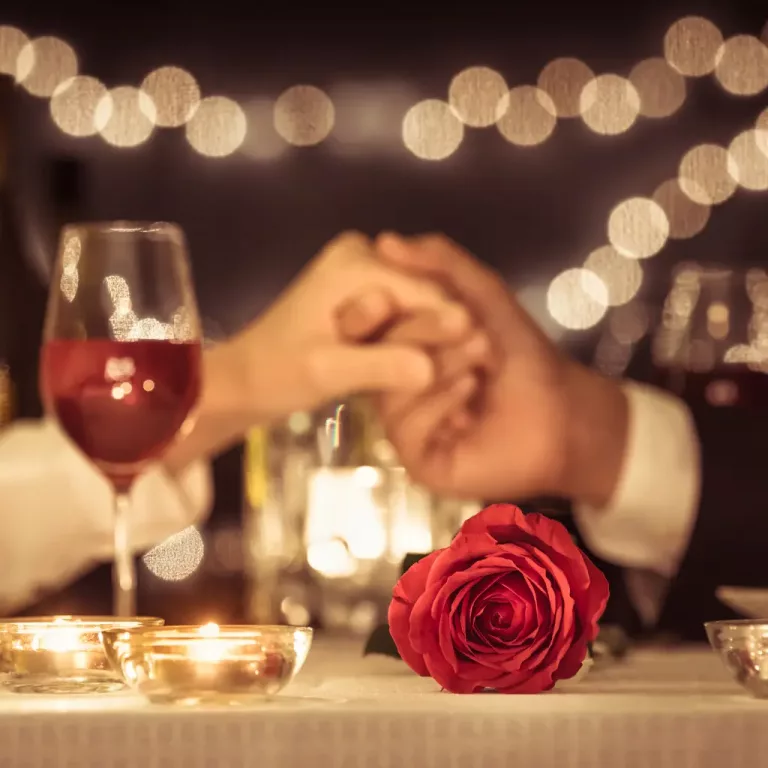Valentine’s Day in the UK is widely recognised as a significant commercial event, though it holds a modest spot in the daily lives of the majority.
It serves as a day to celebrate love and romance, and undoubtedly, it boosts the sales of flowers, chocolates, restaurant reservations, and other related purchases characteristic of the occasion.
Valentine’s Day 2024, 2025 and 2026
| Year | Date | Day | Holiday |
|---|---|---|---|
| 2024 | 14 Feb | Wed | Valentine’s Day |
| 2025 | 14 Feb | Fri | Valentine’s Day |
| 2026 | 14 Feb | Sat | Valentine’s Day |
| Please scroll down to end of page for previous years’ dates. | |||
Valentine’s Day symbols prominently feature Cupid, the Roman deity of affection, poised with his bow and arrow to afflict his targets with a deep sense of love.
The imagery of pink and red hearts is also central to the celebration.
Traditionally, the exchange of red or pink flowers, chocolates, greeting cards, and other presents is common.
Many couples choose this day for romantic dinners, dedicating their time to each other.
Despite its strong associations with romantic gestures, Valentine’s Day’s origins are not deeply rooted in the concept of romantic love, angels, roses, chocolates, or the commercial displays seen on TV and in store windows.
It originally commemorated Saint Valentine, a 3rd-century martyr who was executed for his Christian beliefs in Rome.
The transformation of Valentine’s Day into a celebration of romantic love can largely be credited to Geoffrey Chaucer, the 14th-century English poet.
He linked the day with the early spring, a time when nature reawakens with life and love, establishing a tradition that sees February 14 as a day for romance.
While the modern celebration encourages the buying of gifts as expressions of love, it’s also a reminder that love can be shown in numerous other ways that truly resonate with each couple.
This emphasises not just the commercial aspect but the genuine expressions of love that can vary widely among individuals.

Previous Years
Previous Years
| Year | Date | Day | Holiday |
|---|---|---|---|
| 2023 | 14 Feb | Tue | Valentine’s Day |
| 2022 | 14 Feb | Mon | Valentine’s Day |
| 2021 | 14 Feb | Sun | Valentine’s Day |
| 2020 | 14 Feb | Fri | Valentine’s Day |
| 2019 | 14 Feb | Thu | Valentine’s Day |
| 2018 | 14 Feb | Wed | Valentine’s Day |
| 2017 | 14 Feb | Tue | Valentine’s Day |
Valentine’s Day FAQs
The true meaning of Valentine’s Day is a bit complex and has evolved over time. It originated as a Christian feast day honoring a martyr named Valentine and through later folk traditions, it has also become a significant cultural and romantic celebration. The holiday’s origins can be traced back to ancient Rome, where the Romans celebrated the feast of Lupercalia from Feb. 13 to 15, a time of violent and ritualistic celebrations. The name “Valentine” is likely based on a combination of two Valentines who were executed on February 14 in different years by Roman Emperor Claudius II in the 3rd century. Over time, the holiday has evolved into a day to celebrate love, romance, and affection, marked by the exchange of cards, flowers, and gifts. While its origins may be dark and muddled, Valentine’s Day has transformed into a day for expressing love and appreciation for the people in one’s life.
The true story of Valentine’s Day is a blend of history, legend, and folklore. It is believed to have originated from the commemoration of one or possibly two Christian martyrs named Valentine who were executed on February 14 in the 3rd century by the Roman Emperor Claudius II. Over time, the holiday evolved from its dark and violent origins into a day associated with love, romance, and the exchange of cards, flowers, and gifts. The modern celebration of Valentine’s Day is a far cry from its ancient and bloody roots, having been influenced by various cultural and commercial factors. While its exact origins remain somewhat mysterious, Valentine’s Day has come to be recognised as a day to express affection and appreciation for loved ones.
The celebration of Valentine’s Day has evolved over time and is now associated with love, romance, and the expression of affection for loved ones. The modern celebration of Valentine’s Day is rooted in the commemoration of one or possibly two Christian martyrs named Valentine, who were executed on February 14 in the 3rd century by the Roman Emperor Claudius II. Over the centuries, Valentine’s Day has become a day to celebrate romantic love and to express appreciation for significant others, friends, and family members. While its origins may be dark and muddled, Valentine’s Day has transformed into a day for expressing love and appreciation for the people in one’s life. The holiday’s true meaning has thus evolved into a celebration of love and affection for others, making it a significant day for many people around the world.
The seven days leading up to Valentine’s Day, also known as Valentine’s Week, include the following:
1. **Rose Day** (February 7): A day to exchange roses and express emotions.
2. **Propose Day** (February 8): A day to make romantic proposals and confess love.
3. **Chocolate Day** (February 9): A day to gift and indulge in chocolates.
4. **Teddy Day** (February 10): A day to exchange teddy bears as a symbol of love.
5. **Promise Day** (February 11): A day to make promises and commitments to loved ones.
6. **Hug Day** (February 12): A day to embrace and express affection through hugs.
7. **Kiss Day** (February 13): A day to celebrate love with kisses.
These days are often celebrated by couples as a lead-up to Valentine’s Day on February 14, which is widely recognized as the day of love and romance.
The tradition of giving red roses on Valentine’s Day has deep historical and symbolic roots. Red roses have been associated with love and romance for centuries, dating back to ancient cultures such as the Greeks and Romans, who linked the rose to their goddesses of love, Aphrodite and Venus. During the Victorian era, the practice of floriography, or the language of flowers, became popular, and red roses came to symbolise romantic love and passion. The colour of the rose also carries significance, with red symbolising love and passion, pink representing appreciation and grace, and yellow conveying friendship and happiness. Therefore, the tradition of giving red roses on Valentine’s Day is deeply rooted in the historical and cultural association of the flower with love and romance.
The traditional Valentine’s Day gifts include:
1. **Flowers**: Particularly roses, which have been associated with love and romance since ancient times.
2. **Cards**: Exchanging Valentine’s Day cards has been a long-standing tradition, dating back to the 17th century.
3. **Chocolates**: Chocolate became a popular gift for Valentine’s Day, possibly due to its aphrodisiac effects, and is now a common expression of love and affection.
4. **Jewelry**: While not as universal as the other gifts, jewelry has become a symbol of love and affection, particularly in more recent times.
These gifts have become enduring symbols of love and affection exchanged on Valentine’s Day, expressing romantic sentiments and appreciation for loved ones.
Traditional Valentine’s Day cards have a rich history and have evolved over time. In the 18th century, giving romantic Valentine’s Day cards slowly came into fashion, and by the end of that century, pre-printed cards began to appear. These cards often featured romantic and sometimes humorous messages. The tradition of giving friends and family Valentine’s Day cards also emerged, with a wide range of sentiments being expressed, from romantic to downright rude. Over time, the practice of exchanging Valentine’s Day cards became more widespread, and today, it is a traditional gesture of love and affection on this special day. The cards often feature romantic imagery, such as hearts, cupids, and flowers, and may include sentimental or poetic messages expressing love and admiration.
Valentine’s Day has undergone significant changes over time. Its origins can be traced back to ancient Rome, where the Romans celebrated the feast of Lupercalia, a time of violent and ritualistic celebrations. The holiday later became associated with the commemoration of one or possibly two Christian martyrs named Valentine, who were executed on February 14 in the 3rd century. Over time, the holiday evolved from its dark and violent origins into a day associated with love, romance, and the exchange of cards, flowers, and gifts. The holiday’s transformation was influenced by various cultural, religious, and commercial factors. For instance, William Shakespeare helped romanticize Valentine’s Day in his work, and it gained popularity throughout the years. The tradition of giving Valentine’s Day cards has also evolved, from handwritten letters to pre-printed cards, becoming a significant part of the holiday’s celebration. Additionally, the holiday became more commercialized over time, with the exchange of gifts such as jewelry, chocolates, and flowers becoming traditional expressions of love and affection. Therefore, Valentine’s Day has changed from its ancient and bloody origins into a day for expressing love and appreciation for the people in one’s life, marked by various cultural and commercial influences.






